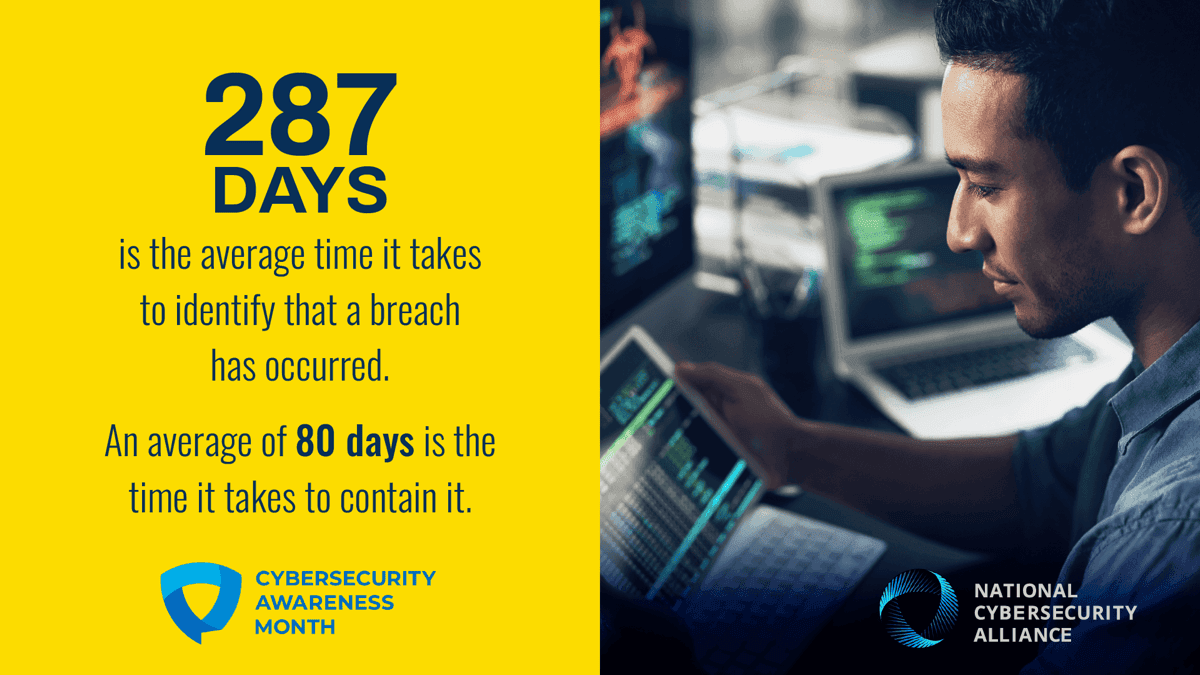October 04, 2022 | Cyber Security
The Anatomy of a Data Breach: What are They and What to do When You Spot One?

Arguably no phrase has dominated the tech world the last 24 months more than the term “data breach.” From breaches that have impacted critical infrastructure like the Colonial Pipeline to ransomware attacks on CMA and CGM, the last two years have been saturated by headlines of cybersecurity mishaps. Yet, despite the prevalence of the breach-centric news cycle, many people may not know what exactly data breaches are, how they typically start, and why they occur.
According to IBM, the average time it takes to identify that a breach has occurred is 287 days, with the average time to contain a breach clocking in at an additional 80 days. And with 81% of businesses experiencing a cyberattack during COVID, it is essential that individuals are familiar with the anatomy of a data breach so that they can keep their data, as well as their colleagues’ and customers’ data, safe.
What is a data breach?
While it may seem like a complex concept, once the jargon is removed, a data breach is actually straightforward to explain. According to Trend Micro, a data breach is “an incident where information is stolen or taken from a system without the knowledge or authorization of the system’s owner.” And while data breaches can be the result of a system error or human error, a vast majority of data breaches are the result of cyber attacks, where a cyber criminal gains unlawful access to sensitive system data. 92% of the data breaches in Q1 2022 were the result of cyberattacks.
What kind of data can be breached?
Cyber criminals look to get their hands on any information that they possibly can, ranging from obviously sensitive information such as social security numbers and credit card information to more obscure data like past purchase history.
What are some of the tactics used to execute data breaches?
Cybercrime is getting more sophisticated each day. However, cyberattack tactics do not have to be cutting-edge or advanced in order to be very effective. Here are a few examples of popular tactics used by cybercriminals:
- Phishing: Phishing is when a cybercriminal pretends to be a legitimate party in hopes of tricking an individual into giving them access to personal information. Phishing is one of the oldest tricks in the book for cybercriminals but it is just as effective as ever. To date, 80% of security incidents and 90% data breaches stem from phishing attempts.
- Malware: Another tried-and-true method for cybercriminals is malware. Malware is malicious software that secretly installs itself on devices – often by way of a user engaging with fake links and content. The malware quietly gains access to the data on an individual’s device or a business network and makes that data available to the cybercriminal.
- Password Attack: Through password attacks, cybercriminals look to gain access to sensitive data and networks by way of “cracking” user passwords and using these credentials to get into networks and extract data from a given network.
How to avoid or respond to a possible breach?
The best way to stop a data breach is to stop it before it even starts. This includes taking steps from making sure passwords are long and complex to reporting suspicious emails. If you do suspect that you have been the victim of a breach, immediately contact your IT department or device provider to notify them and follow subsequent protocols to help them scan, detect, and remediate any issues that exist.
A breach coach can help you manage the incident from notification compliance to client and vendor communications and crisis management support.
Source: National Cybersecurity Alliance
Cybersecurity Awareness Month is co-led by the National Cybersecurity Alliance and the Cybersecurity and Infrastructure Agency (CISA). For more information about ways to keep you and your family and business safe online visit https://staysafeonline.org/cybersecurity-awareness-month/ and https://www.cisa.gov/cybersecurity-awareness-month
Disclaimer: This information is provided as a public service and for discussion of the subject in general. It is not to be construed as legal advice. Readers are urged to seek professional guidance from appropriate parties on all matters mentioned herein.













